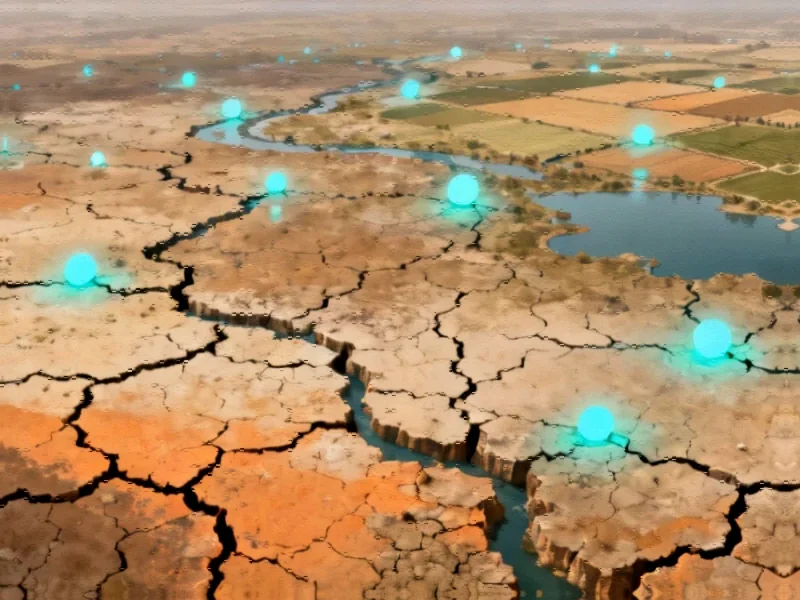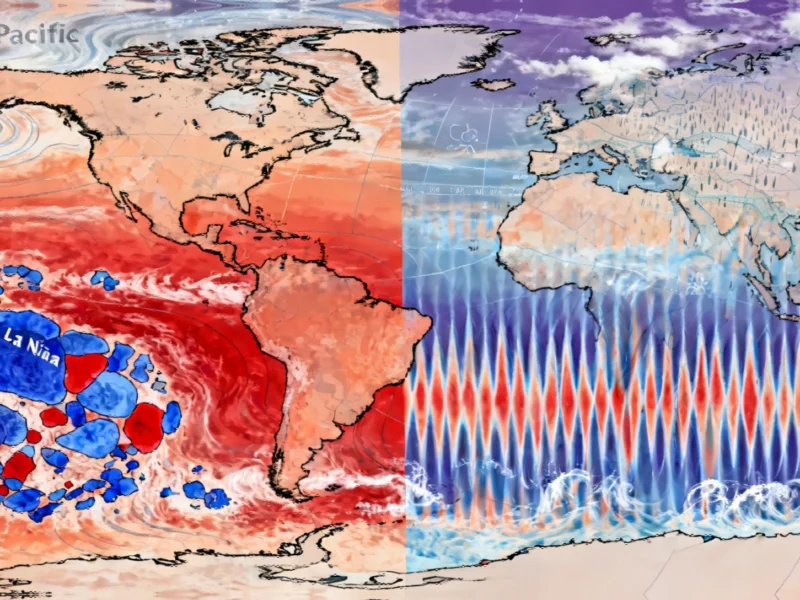The Critical Nodes in Climate Impact Cascades
Recent research from the Potsdam Institute for Climate Impact Research reveals that certain systems function as critical intervention points for preventing cascading climate impacts. Water resources, agricultural systems, livelihoods, and conflict dynamics consistently emerge as the most influential nodes in climate impact networks. When these systems face disruption, the consequences ripple across societies and economies in predictable yet devastating patterns.
The study employed a sophisticated combination of stakeholder engagement and quantitative network modeling to map these relationships. According to researchers Cornelia Auer and Christopher Reyer, “Disruptions in water and agricultural systems are strongly linked to livelihood instability, particularly in low-income countries where these impacts frequently cascade into human mobility and conflict.” This interconnectedness means that isolated solutions often fail to address the root causes of climate vulnerability.
Divergent Impacts Across Economic Contexts
The analysis reveals strikingly different vulnerability patterns across economic contexts. In lower-income countries, climate impacts typically cascade from water and agricultural disruptions into livelihood collapse, forced migration, and sometimes violent conflict. Meanwhile, high-income economies face different transmission channels, with agricultural export reductions emerging as significant vectors for cross-border climate risks.
Through k-means clustering, researchers identified three distinct vulnerability profiles: lower-income economies, high-income economies, and conflict-prone regions. Each cluster demonstrates unique patterns of node importance, suggesting that effective adaptation strategies must be context-specific rather than one-size-fits-all. Understanding these water and agriculture systems as key leverage points provides policymakers with actionable intelligence for building resilience.
The Policy Coherence Imperative
The research underscores a critical insight for climate adaptation planning: policy coherence matters more than isolated interventions. Increasing agricultural production without integrated water management, for example, might inadvertently intensify water scarcity. Similarly, targeted support for livelihoods can reduce the risk of forced migration and social unrest, breaking the chain of cascading impacts.
This approach aligns with broader industry developments in systems thinking and complex network analysis. As climate impacts become increasingly interconnected, decision-makers need tools that capture these relationships rather than treating risks in isolation. The European Union’s climate resilience strategy specifically benefits from this understanding, as addressing critical nodes can help break channels of cascading impacts across member states.
Methodological Innovations and Limitations
The study’s methodology represents a significant advancement in climate impact assessment, combining qualitative stakeholder input with quantitative network modeling. However, the researchers acknowledge several limitations that introduce uncertainty. The analysis relies on country-specific data of varying quality and assumes static, linear relationships between nodes, potentially oversimplifying complex, nonlinear dynamics.
Particularly for sensitive nodes such as violent conflict or human mobility, these simplifications might miss crucial feedback loops and threshold effects. Additionally, the use of historic data means that unprecedented climatic chains might be overlooked. These methodological challenges highlight why this approach should complement, not replace, local expert knowledge and practical adaptation experience.
Future methodological related innovations could address these limitations by incorporating nonlinear functions and scenario-based “storylines” that better capture the complexity of real-world systems.
Future Research Directions
The researchers outline several promising directions for extending this work. Future studies could enhance the representative power of impact cascade networks by integrating a wider range of input cascades across varying social and political conditions. Particular attention should focus on the financial sector and broader economic systems, which currently receive limited treatment in the archetypal network.
To manage complexity while maintaining analytical rigor, the researchers suggest representing resulting networks in multilayer graphs. This approach would allow for more nuanced analysis of specific interventions or future scenarios. Such methodological advances parallel recent technology developments in other fields dealing with complex systems.
The inclusion of more granular impact cascades for specific regions would strengthen contextual understanding and support locally relevant adaptation planning. As detection and monitoring technologies advance, including market trends in sensing capability, researchers will be better equipped to capture region-specific dynamics.
Implications for Industrial and Technological Sectors
The findings have significant implications for industrial and technological sectors engaged in climate adaptation. Understanding critical nodes in impact cascades helps prioritize investments in resilience-building technologies and infrastructure. Water management systems, agricultural technologies, and livelihood support programs emerge as particularly high-leverage intervention points.
This systems perspective also highlights the importance of cross-sectoral collaboration. Technological solutions must be developed with an understanding of how they might affect—or be affected by—other nodes in the climate impact network. The growing field of industry developments in biological engineering, for instance, might contribute to agricultural resilience but must be considered within broader water and livelihood contexts.
As climate impacts continue to cascade through global systems, this research provides a crucial framework for identifying where interventions will be most effective in building resilience across economic, social, and environmental domains.
This article aggregates information from publicly available sources. All trademarks and copyrights belong to their respective owners.
Note: Featured image is for illustrative purposes only and does not represent any specific product, service, or entity mentioned in this article.


